Today’s workplaces are highly digital, and employers need to embrace this trend by understanding their employee personas and providing technology that enables them to do their best work.
Moreover, the emergence of the pandemic has led businesses to embrace digital workplaces in an even faster pace. Remote work and dispersed workforce are some of the biggest reasons why organizations need to become more digital.
In this blog, we will discuss the biggest drivers of digital workplaces as well as best practices for creating and managing a digital workplace strategy.
📚 As employee communications play a crucial role in supporting digital workforce, check our eBook “10 Principles of Modern Employee Communications” and learn how to communicate with the modern employees in today’s digital age.
Digital Workplace Defined
There is no single definition of digital workplace. As digital trends in the workplace are still emerging at a fast pace, there are many different definitions that look at this concept from a different perspective.
However, most experts agree that a digital workplace can be considered as the natural evolution of the workplace. It includes all of the technologies employees use to do their jobs on a daily basis.
To embrace the power of technology, leading organizations have begun to implement an entirely new working environment. However, even more than just implementing new solutions, it is important to integrate them in a way that brings the most value to the employees.
As explained by Deloitte,
“By integrating the technologies that employees use, the digital workplace breaks down communication barriers, positioning you to transform the employee experience by fostering efficiency, innovation and growth. The key to success, however, lies in the effective implementation of a digital workplace strategy capable of driving true cultural change.”

Digital Workplace Framework
Deloitte did one of the most comprehensive analysis of the emergence and characteristics of a digital workplace.
In their framework, they explain that digital workplace is all about the employees’ ability to do their job by collaborating, communicating and connecting with other.
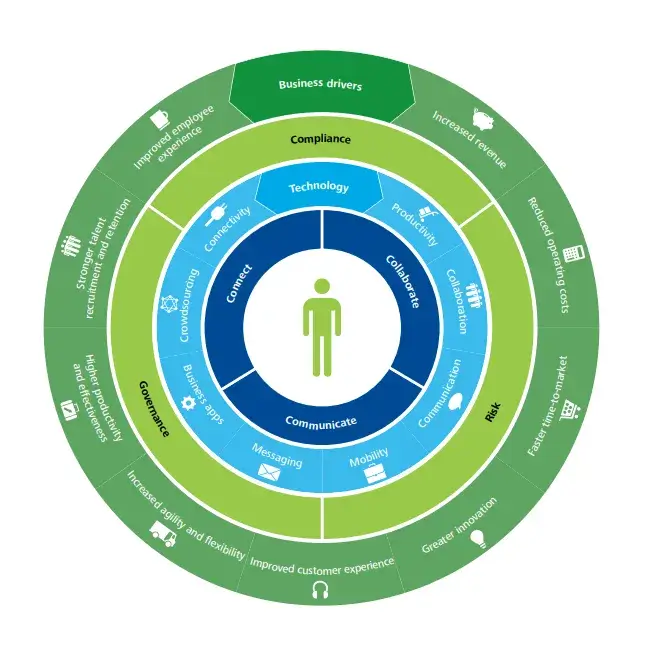
More specifically, by fostering a culture of digital workplace and unifying various technology components, organizations can significantly improve:
- Collaboration – Collaboration in the workplace is important for solving problems and being more productive. Therefore, organizations need to enable knowledge sharing across the enterprise with online, seamless, integrated and intuitive collaboration tools that enhance employees’ ability to work together.

- Communications – As information continues to grow at a rapid rate, employers need to ensure that the right information reaches the right audience. Employers and employees need tools that support two-way communication and the personalization of content.
- Connections – Employees need tools that allow them to connect with their peers across the organization, leverage intellectual property and gain insight from one another.
📚 Also check Digital Transformation (DX): Best Practices for Driving Change.
8 Drivers Shaping Digital Workplaces
Gone are the days when the workplace was merely a physical space. Moreover, the emergence of the current pandemic has significantly accelerated the shift towards remote work.
Today’s always connected, instant access environment has blurred the lines between the physical office and the place where work actually happens.
As the workplace becomes truly digital, employees are communicating and collaborating in unprecedented ways and they have different expectations from their employers.
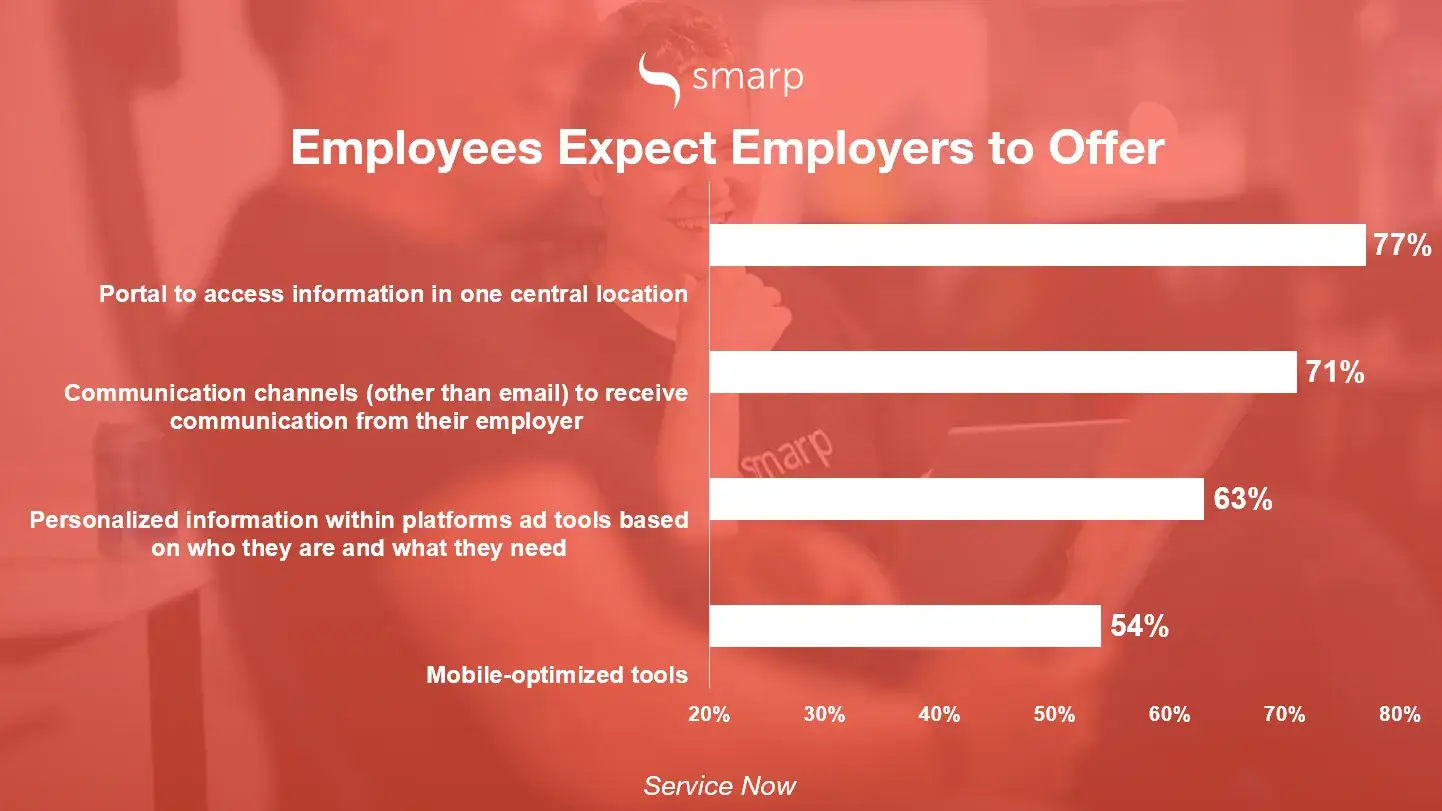
As a result, as Deloitte explains:
“It is increasingly clear that the traditional ‘create and push’ information approach no longer meets employees’ evolving needs.”
Let’s now take a look into some of the biggest drivers shaping the digital workplace.
1. New generations: Mobile and SaaS lovers
The future of work is mobile. Consequently, many employers are recreating their digital workplaces on mobile, mirroring the desktop experience of their existing communications, collaboration and other technology solutions.
Such approach streamlines the digital workplace, enabling a central access point to coworkers, critical applications, content, real-time company updates and notifications.

Additionally, most employees today prefer working “in cloud” which is why SaaS digital workplace solutions are at their peak.
2. The need for personalization
Providing customized employee experience, content and access to information is becoming the new normal.
Employers are expected to provide personalized employee experience based on their employees functions, roles, preferences, locations and cultures the same way as marketing and sales professionals are expected to provide personalized customer experience.
Such approach is impossible to achieve without the right technology in place, which is why organizations are turning to new solutions with robust personalization features and functionalities.
One of the best examples is the personalization and localization of internal communications content. Employee communications solutions should enable communicators, employees and managers to easily segment audiences, define employee personas, and deliver the right content to the right employees at the right time.
On the other hand, employees should be able to create personalized news feeds with all the relevant information, instant access to people, tools and resources.
Personalization is becoming vital to shaping each person’s workplace environment and experience. These personalized digital environments provide common spaces that encourage spontaneous interaction within and across teams.
3. Dispersed workforce and remote work
20-25% of the global workforce telecommutes on a regular basis and 50% of the workforce is made up of front-line workers such as grocery store clerks, nurses, cleaners, warehouse workers, and bus drivers, among others.
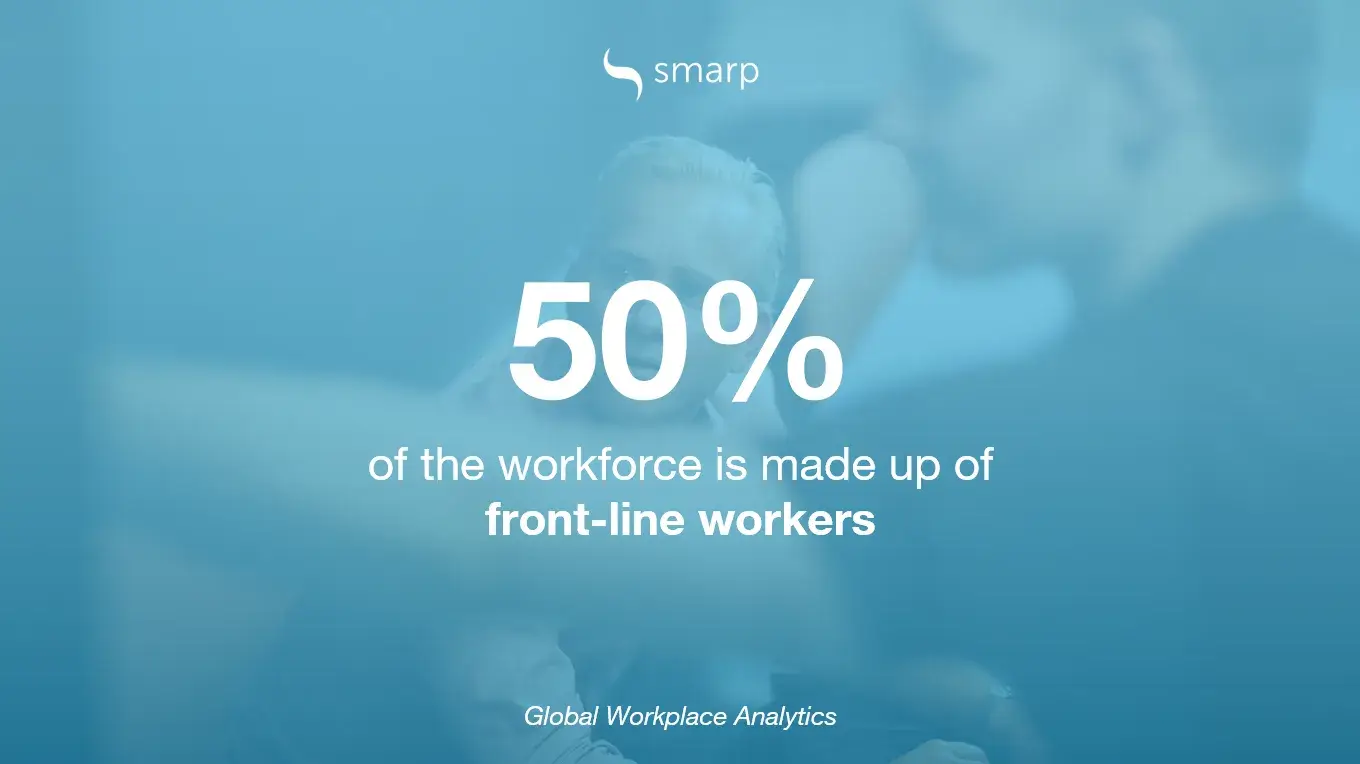
Additionally, we’re seeing a growing trend towards flexible and remote working. The result is a hugely dispersed and, often, hard-to-reach workforce.
As a consequence, the way in which these different groups connect, collaborate and communicate with one another, access important business information, updates and documents is becoming more complex. To mitigate the consequences, employers are looking for new ways to engage their distributed workforces.
Digital workplaces enable employers to provide easier, more streamlined and effective ways to find and consume critical information while delivering positive digital experience.
📚Read on: Change Management: Definition, Best Practices & Examples
4. Agility and cross-functional collaboration
Another big driver of digital workplaces is the need for greater agility and cross-functional collaboration in the workplace. Employees no longer operate in silos focusing on collaboration within their departments only.
Instead, they are required to work closely with other teams from different departments located in different countries. Moreover, successful organizations now operate as networks where employees are constantly connected.
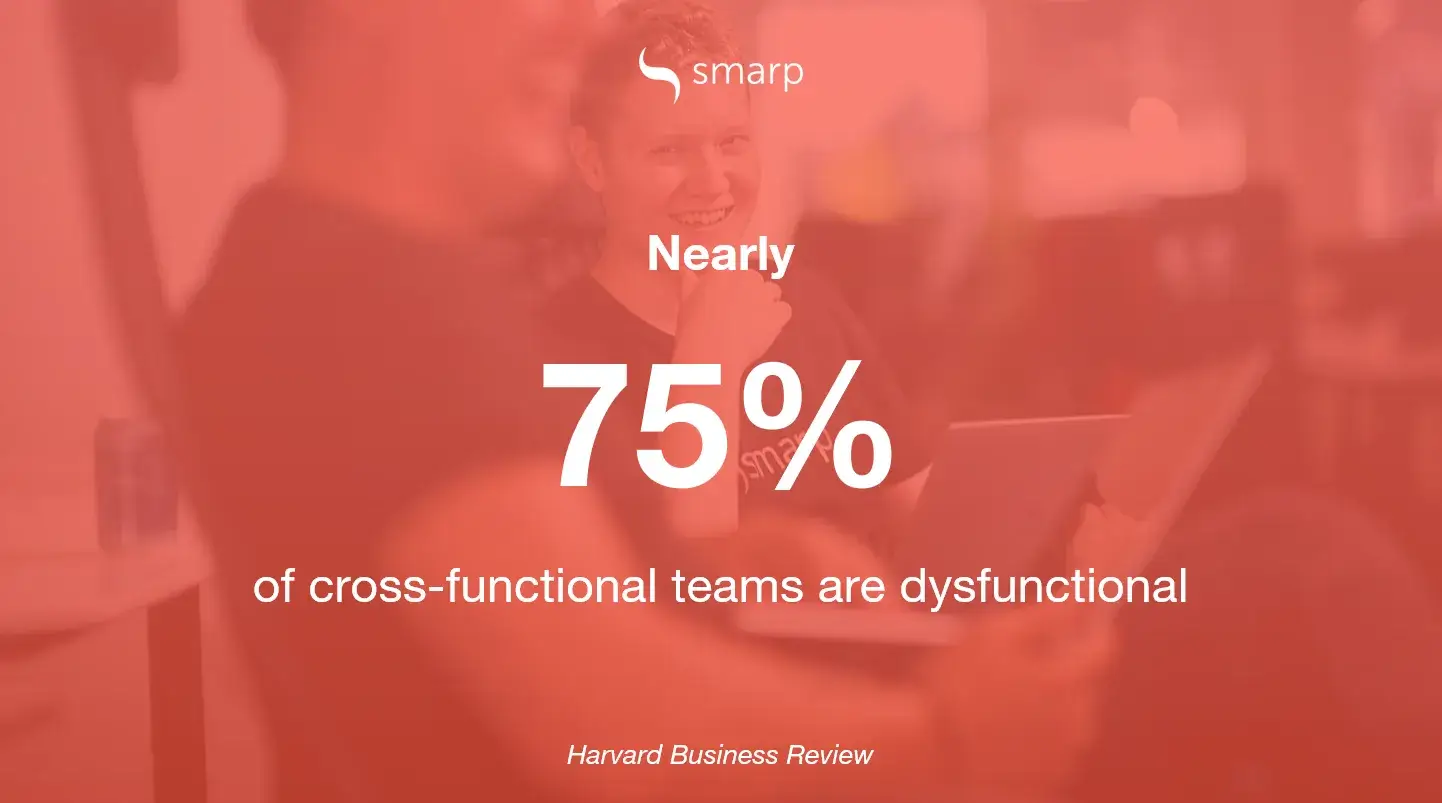
In order to empower employees to collaborate and communicate more efficiently, many organizations are now implementing digital solutions designed for teams to stay connected, have access to shared documents and important company updates.
5. Information overload
Employees across the world are faced with an extensive information overload which negatively impacts their productivity, agility and job satisfaction.
Information is still growing at exponential rates, and employees often can’t find what they need to do their jobs efficiently.

Since the emergence of the current pandemic, this workplace challenge and its negative consequences are even more obvious. New company updates, rules and regulations, safety tips and remote work best practices are just a few examples of communication messages added to the employees’ plates.
To eliminate information overload, employers need to reconsider their internal communications efforts and implement solutions for a more streamlined information flow in the workplace.
Instead of relying on outdated and overcrowded intranets and generic emails, IC professionals and managers need to find better ways to deliver timely, relevant and personalized information to the employees.
6. Knowledge workers and knowledge sharing
Building and managing digital workplaces is crucial for the success of your knowledge workers. According to McKinsey, knowledge-based workers spend up to 19% of their average workweek searching and gathering information.
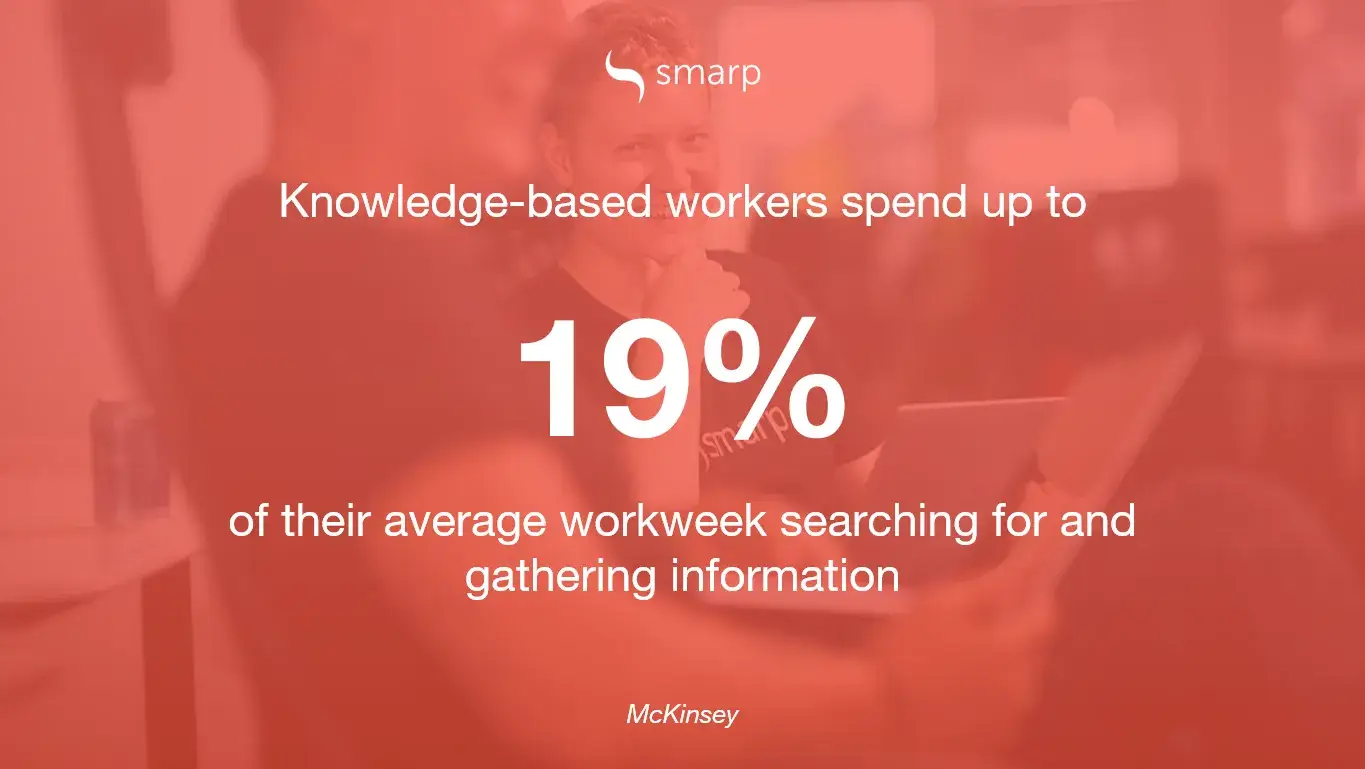
To eliminate such waste of valuable knowledge workers’ time, companies are now looking for solutions that serve as a single source of truth and important information.
Such solutions should have capabilities to connect various communications channels such as employee communications apps, document sharing tools, social media and other tools these workers may use.
7. The focus on Digital Employee Experience (DEX)
Now, when implementing digital solutions in the workplace is not a novelty any more, the era of improving employees’ experience with these tools has come.
Meaning, employers are no longer implementing just any tools, but the tools that are user-friendly, intuitive, mobile-friendly, and therefore, provide exceptional digital working experience to the employees.
📚Read on: 8 Employee Engagement Statistics You Need to Know in 2020 [INFOGRAPHIC]
8. Workplace trust and the changing role of leadership
Last but not least, the changing role of leadership is also raising the need for more digital workplaces. While leaders’ role in the past wasn’t so much to connect with the rest of the workplace and be approachable, this is not the case any more.
In contrast, leaders, who play a crucial role in building trust in the workplace, are expected to show empathy, be authentic and engage in company-wide conversations. However, their work schedule and other responsibilities often make it hard to speak to every employee while staying authentic, visible and consistent.
📚Read on: What Are The Top Leadership Skills That Make a Great Leader?
Luckily, modern employee communications solutions make leadership communications transparent, inclusive for everyone and easy for leaders to manage and measure.
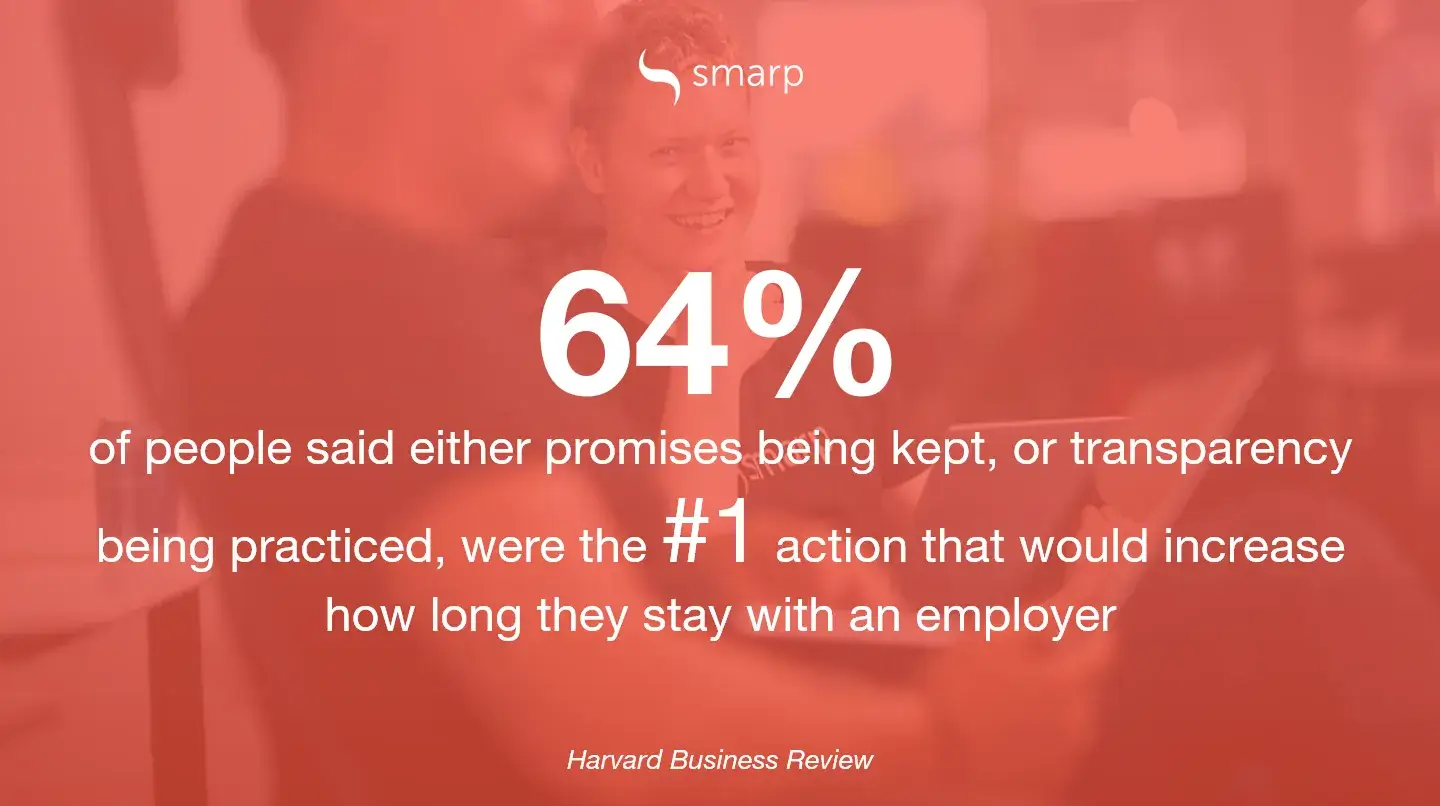
9 Steps to Embracing Your Digital Workplace Strategy
Building and managing a digital workplace is not easy and it requires a well-thought strategy and planning. Many employees are resistant to change within their organizations. Hence, some of the main prerequisites for successful digital transformation include proper employee communications and change management.
📚Read on: 5 Change Management Models to Take a Look At
At the end of the day, the success of your digital workplaces strategy will be as successful as your employees align with it and accept it.
But let’s take a look into the step-by-step guide for building and implementing a digital workplace strategy.
1. Assess your current digital state
Before defining what needs to be changed, you first need to have a clear understanding of your current digital state. The best way to do so is by answering these questions:
- Who are our employee personas?
- What technologies already make up our digital workplace?
- How are these technologies used? Do they make employees more productive? Do they provide positive a digital employee experience?
- Where are the gaps between employees’ technology needs and the tools currently available?
- Can all employees easily connect with each other?
- Can every employee easily find and access important information, regardless of their device or location?
- Do our systems integrate or work together seamlessly and effectively?
- How does our digital workplace tie with our organization’s mission, company values and ultimate business goals?
2. Redefine and invest in your company culture
The way your workforce operates always ties back to your overall organizational culture and core company values. Those organizations that are disconnected, don’t understand the purpose of their work, work in silos or lack leadership visibility are unlikely successfully building and managing their digital workplace initiatives.
However, those who know how to help embed purpose, showcase the internal brand and company’s mission, facilitate two-way employee communication and encourage employees’ share of voice are much more likely to succeed.
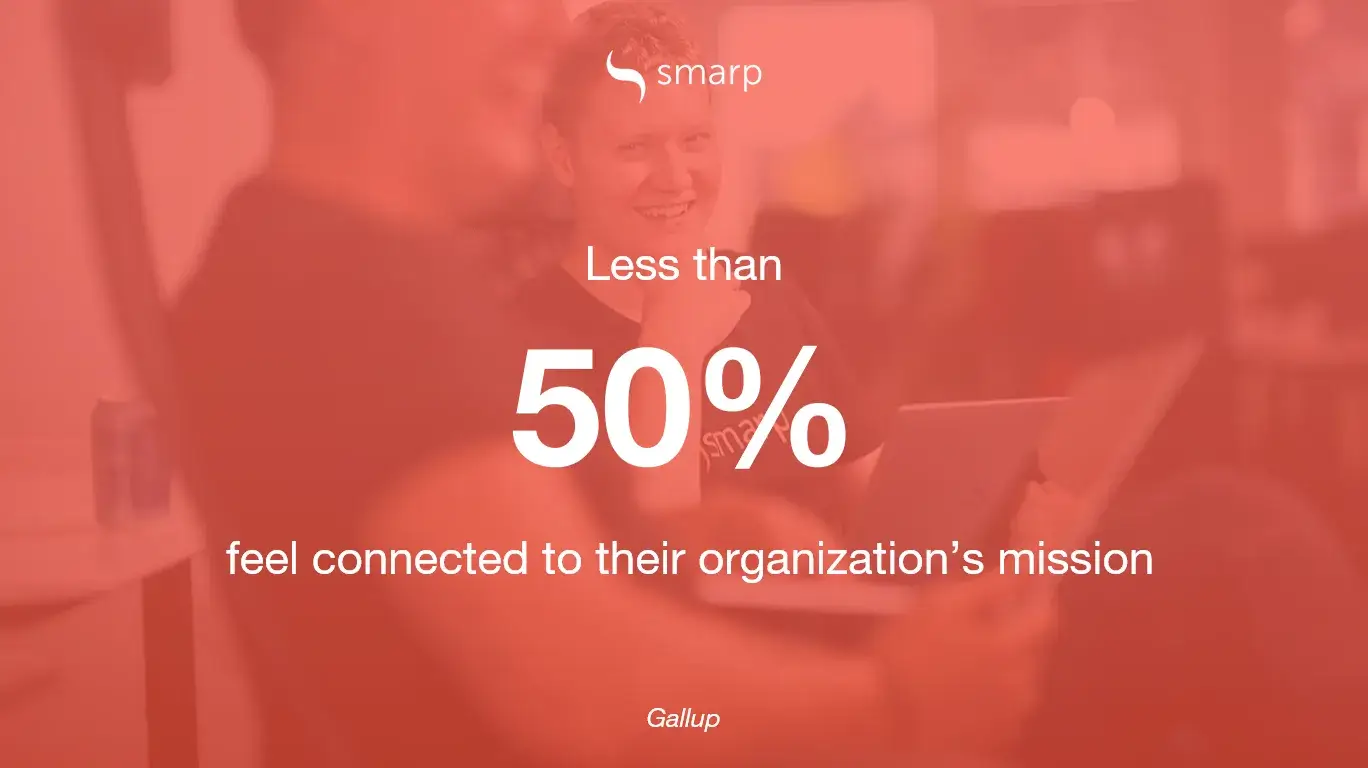
3. Implement the right technology
Creating a digital workplace requires the implementation of the right technology that meets your ultimate business goals. Even though there are probably hundreds of different technology categories out there, remember that before anything else, you need to make sure that your employees always have instant access to their peers’s messages and important information. This should be the base of your digital toolbox.
When choosing technology, pay attention to its user interface, mobile-friendliness, flexibility and ability to connect with other core solutions your employees use.
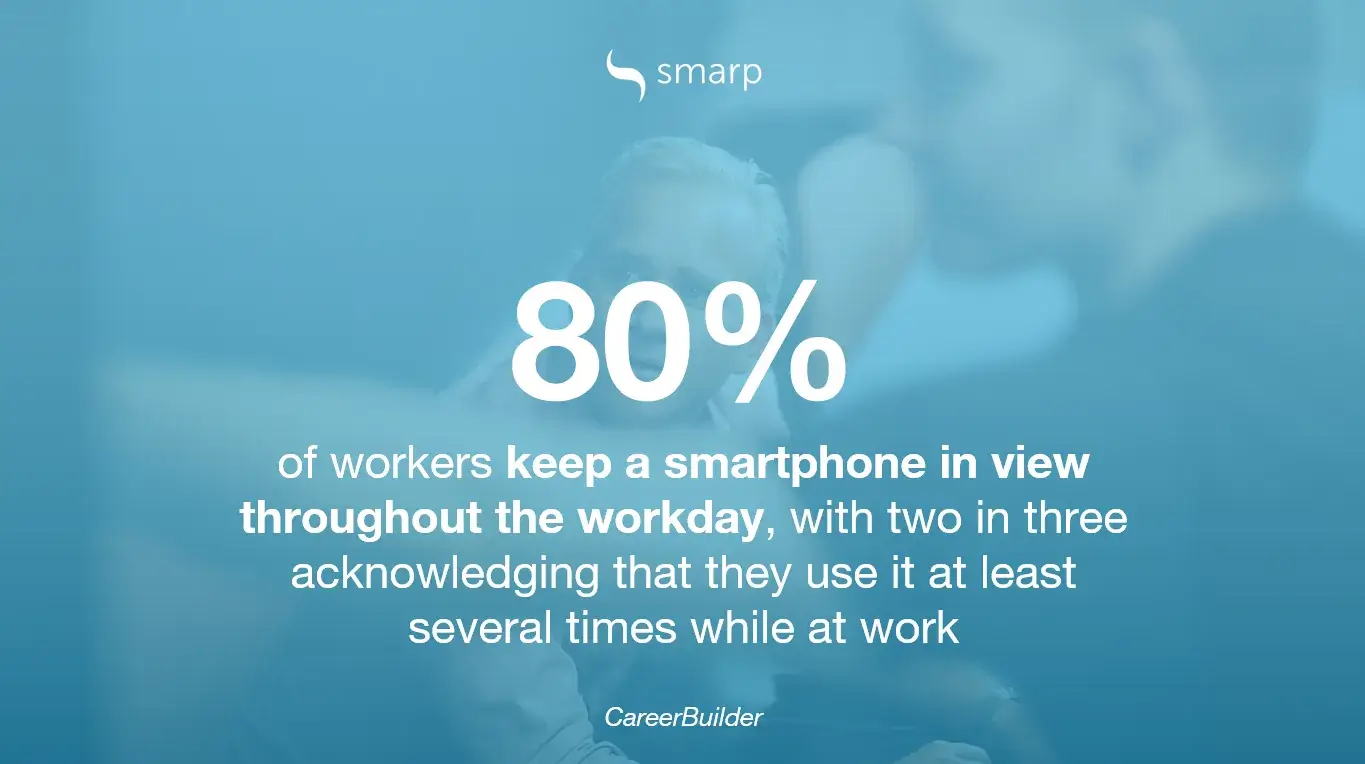
4. Connect your technology toolbox
According to the Global Market Insights, the enterprise application market has expanded at an unprecedented rate in recent years. It is expected to hit a revenue worth of $287.7 billion by 2024; the average enterprise already boasts over 500 applications as part of its technology stack.
Another research shows that the average number of systems workers must access as part of their day-to-day jobs has recently risen from 8 to 11, and 27% of workers estimate they lose up to an entire day every week on irrelevant emails and messages.
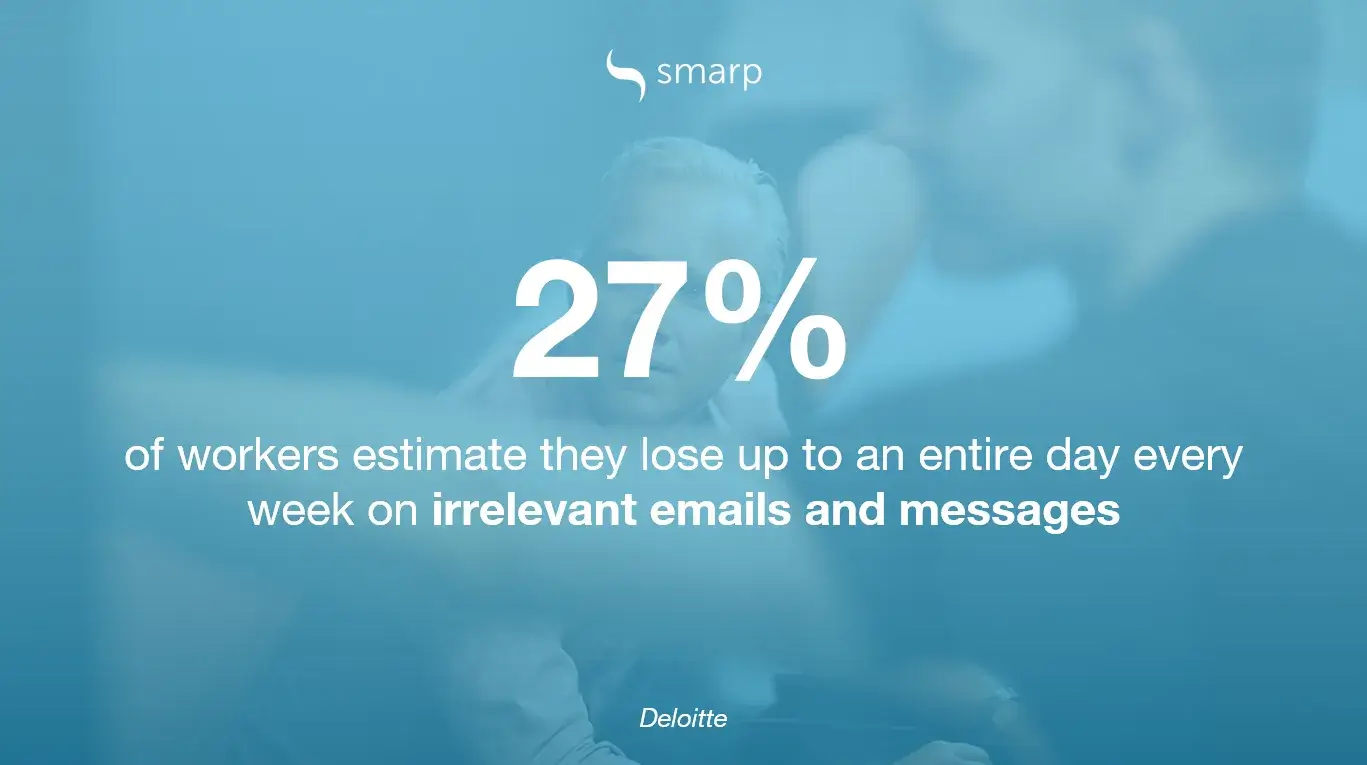
It is clear that organizations are now faced with an increasingly complex technology landscape. Hence, most organizations are now turning to solutions that integrate multiple solutions into a single platform.
When information in the workplace gets scattered, it is likely to get lost and therefore, cause poor employee experience, redundancies and loss in productivity.
As explained by Deloitte:
“But today, having many disparate back-end systems doesn’t have to mean a fragmented front-end user experience. Technologies are available that make it possible to create what we call a “unified engagement platform”: a user-experience layer that can span across systems to provide a seamless digital experience.”
5. Appoint the right people to drive change
Similar to any other organizational change, it is important to have a team or a person who drives the change and inspires the workplace to work towards the same goals.
Today, internal communications departments are often the ones that drive and manage change communications and they often act as a support for leadership, management and other teams involved.
These IC professionals should be creative and inspiring content creators who understand their employee personas and know how to adjust communication messages based on the employees’ needs, wants and preferences.
6. Involve the leaders
As mentioned earlier, leadership plays an important role in driving the culture, mindset and attitude that encourages and supports digital working environments.
Informed senior leadership, by understanding the benefits as well as challenges of a digital workplace strategy, can drive positivity in the workplace and have the entire workplace align with the ultimate business goals.
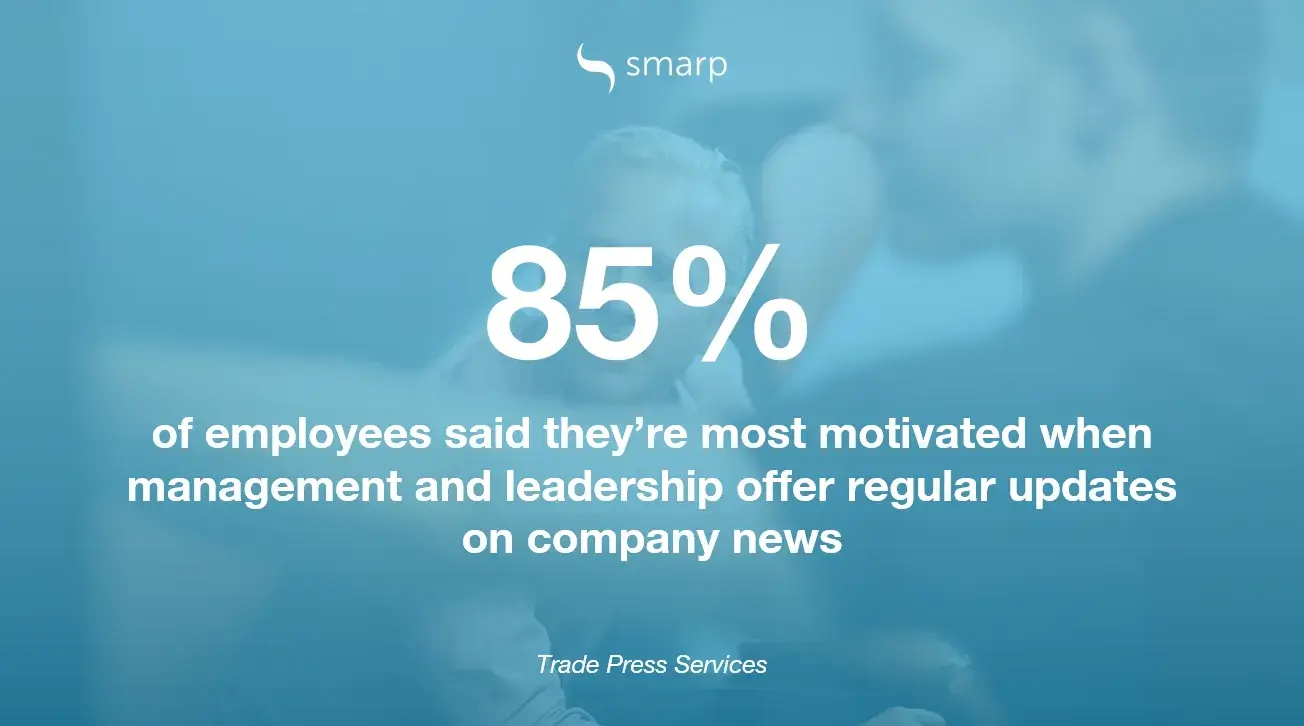
Create a comprehensive workplace communication and change management strategy
Together with change management teams, IC professionals should work to create a robust change communication plan with the goal of aligning the entire workplace with the previously defined digital workplace plan and strategy.
When creating such a communication plan, try to answer these questions:
- Who are our employee personas?
- What are their preferred ways of communication?
- How can we make sure to reach the right employees with the right information at the right time?
- How can we make communication more relevant and personal to achieve better readership and engagement?
- What type of content do our employees prefer? Text, images, videos, podcasts or webinars?
- What key messages should be included in the editorial calendar?
- How are we going to measure the effectiveness of our change communications efforts?
- How will we make sure we enable everyone to join the company conversations, ask questions and raise concerns?
- How and when can we include leadership in the process?
Communicate the benefits to achieve strategic alignment
To drive a successful digital workplace strategy, you need to get employees on your side. In other words, you need to get their buy-in. In order to achieve that, organizations need to build trust, communicate in an open and transparent way and answer the key question: “What’s In It For Me” (WIIFM).
When building your change communication strategy, communicating key messages around the benefits of a digital workplace, for both individuals and the organization as a whole, should be your priority.
When delivering those messages, prioritize their visibility and accessibility to the company-wide news and updates. Make sure that you choose the right communication channels and schedule content delivery for better readership and engagement.
Listen actively and encourage employees’ share of voice
Besides just sharing updates and important information, you should also engage your employees in daily company conversations and encourage their share of voice. Ask your employees for feedback, their concerns and suggestions for improvement regarding your digital workplace strategy.
Create intuitive communication groups and channels where your employees can speak up. At the end of the day, your employees are the most important stakeholders in planning, building, implementing and managing a successful and productive digital workplace.
The Benefits of Building a Digital Workplace
According to research, 95% of organizations agree that a digital workplace is important, and 44% of workplaces have some form of digital workplace programs in place.
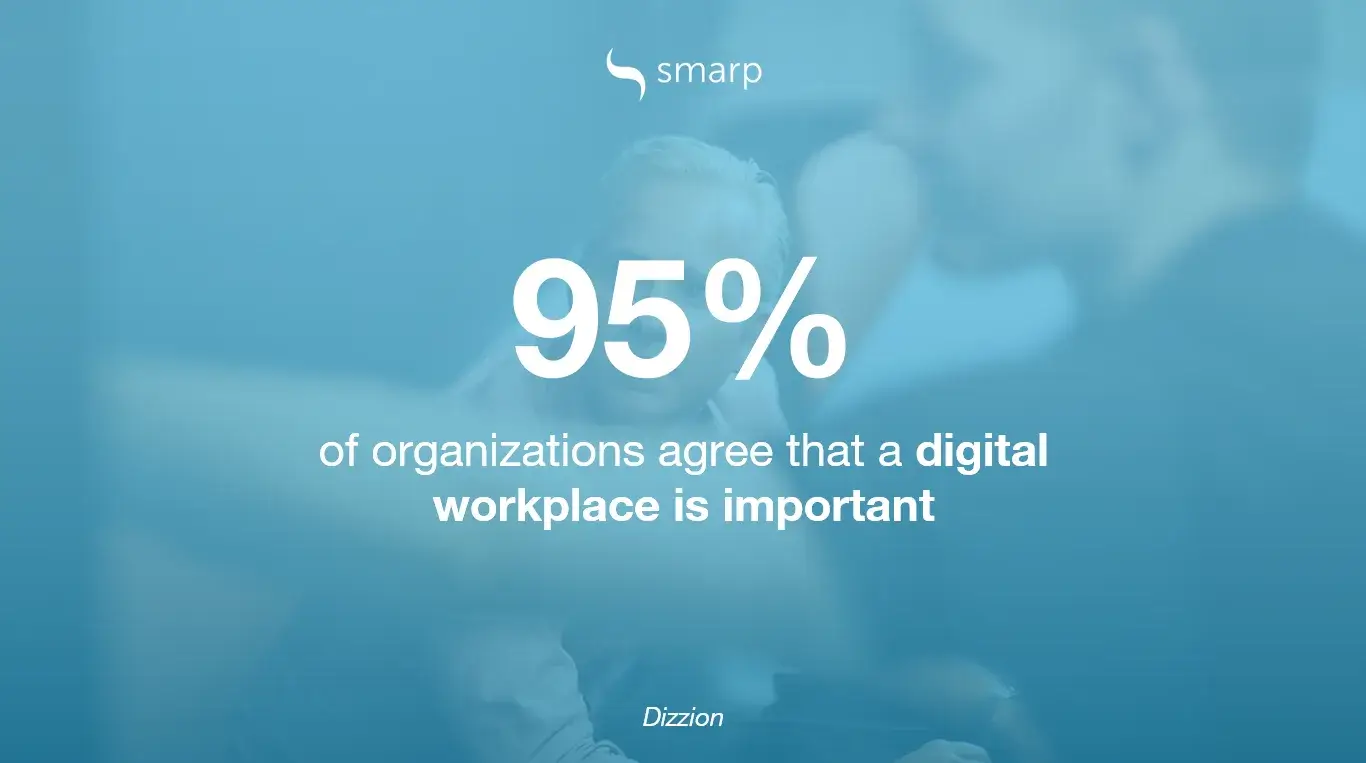
Here are just a few benefits of building a digital workplace:
- Employee engagement and productivity – the same research show that employees who work for firms that make apps available and highly accessible spend 17% less time on manual processes.
- Employee retention – 54% of CIOs agreed that the ability for their workforce to easily access business applications has reduced attrition rates.
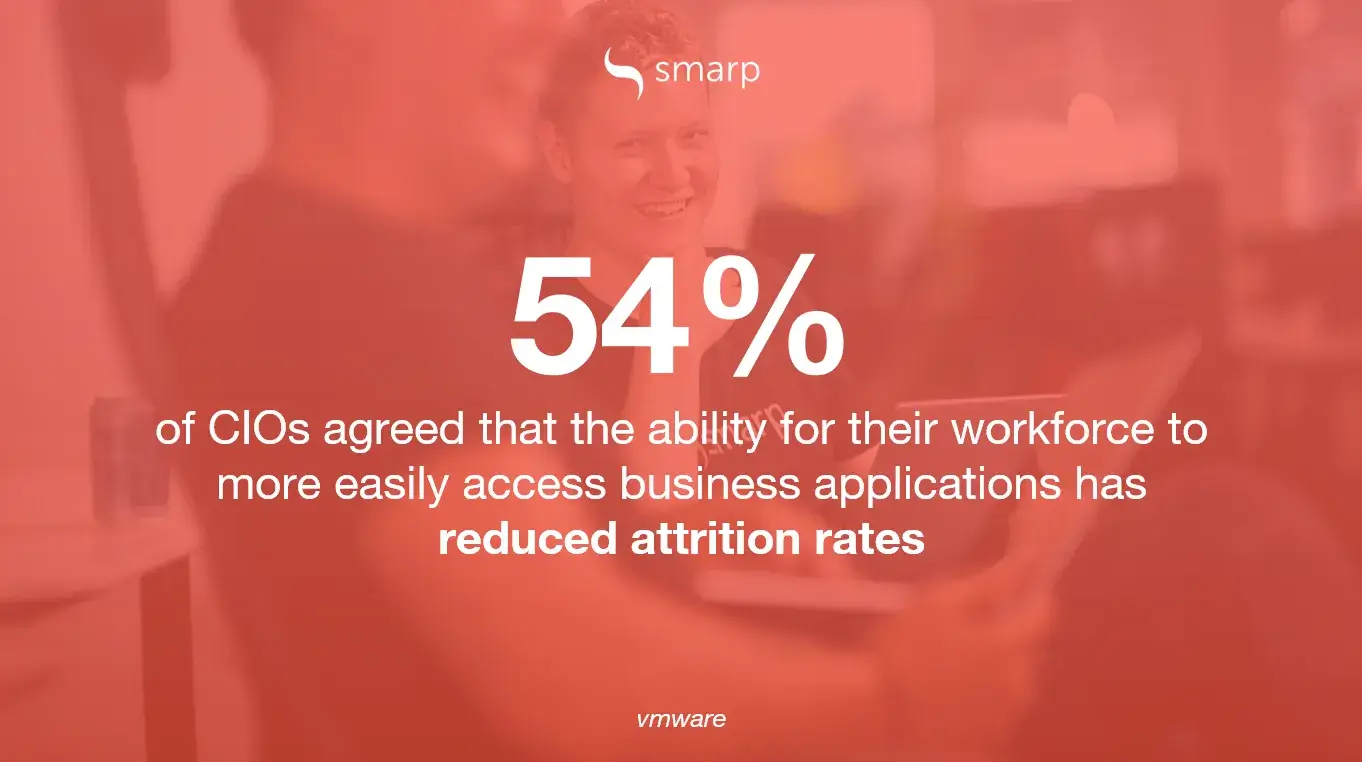
- Innovation, problem solving and collaboration – Many employees agree that there is a lack of collaboration in the workplace, making it harder to innovate and make decisions. Within digital workplaces that use collaboration and communication solutions, employee collaboration is more streamlined and productive.
- Talent attraction – According to another research, 80% of employees prefer to work for digital leaders. And this is not limited to millennials but applies across all age groups.
- Closing the skill gap – the European Commission figures show that around 37% of workers in Europe don’t have even basic digital skills. Not to mention advanced digital skills. Building a digital culture in the workplace is a great way for closing the increasing skill gaps.
- Improved knowledge sharing – According to data, Fortune 500 companies lose roughly $31.5 billion a year by failing to share knowledge. When employees are digitally connected, knowledge sharing becomes much easier, natural and streamlined.
Remember that an ideal digital workplace should support smooth multi-way communication between employees, managers and leaders so that they can discuss work and convey relevant information.
However, installing an instant messaging app is not enough. A collaboration tool should be deeply embedded in your digital workplace so that employees don’t have to toggle between multiple applications in order to easily find relevant information and documents, stay informed with important updates and stay connected with their peers.
If your goal is to build or optimize your digital workplace strategy, keep your employees engaged and well informed, and consolidate your communication channels into a single platform, schedule a Smarp demo and take your business to the next level.










